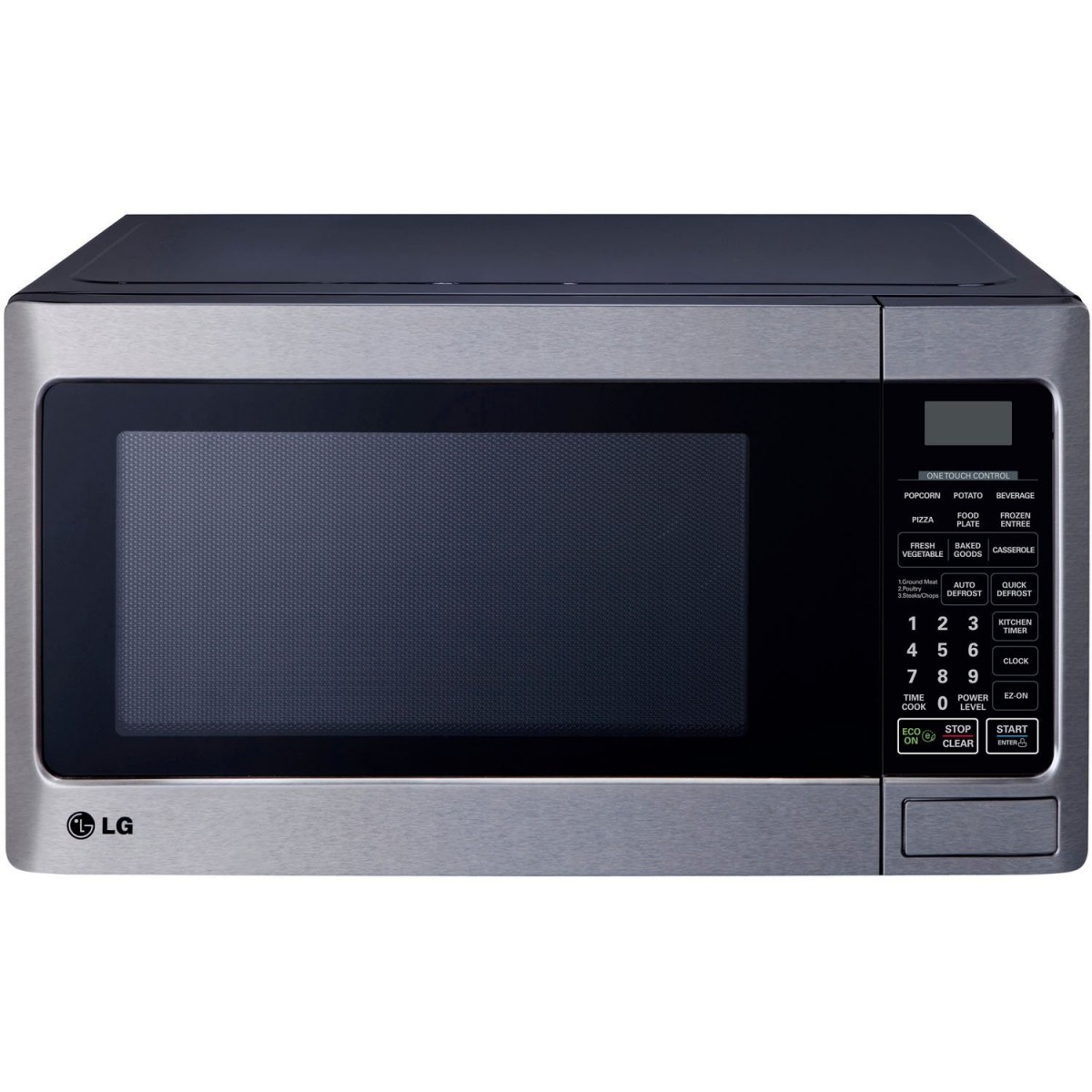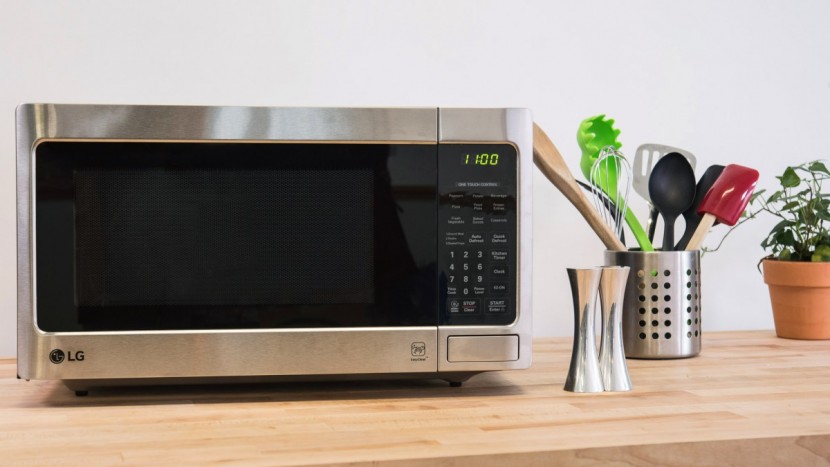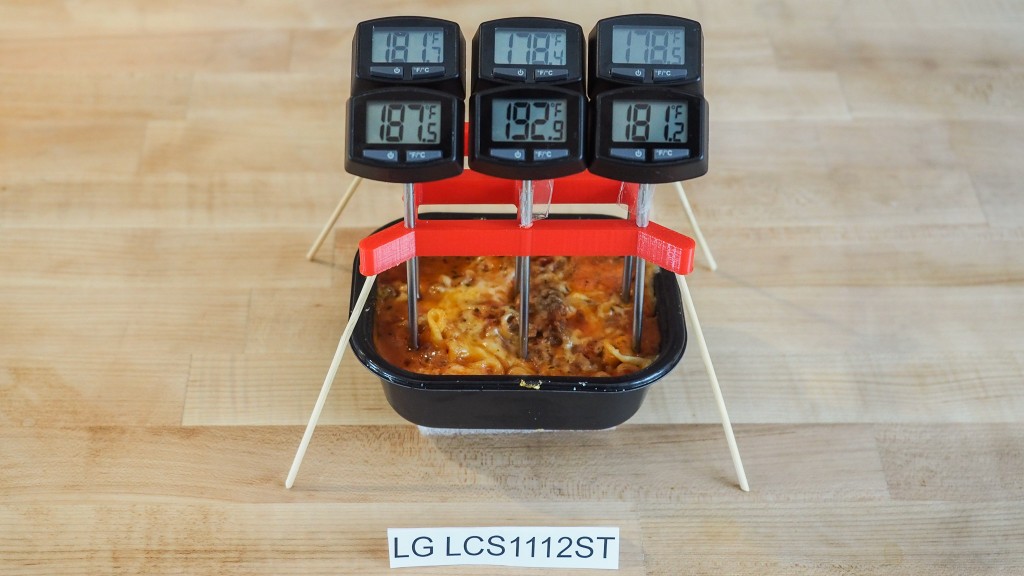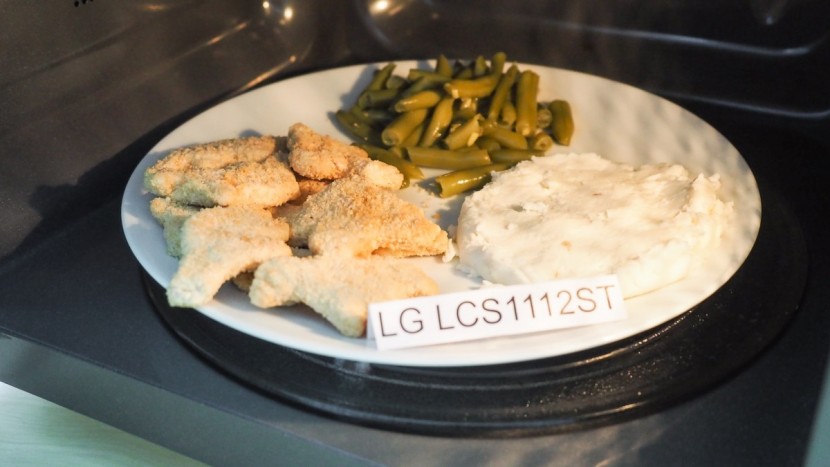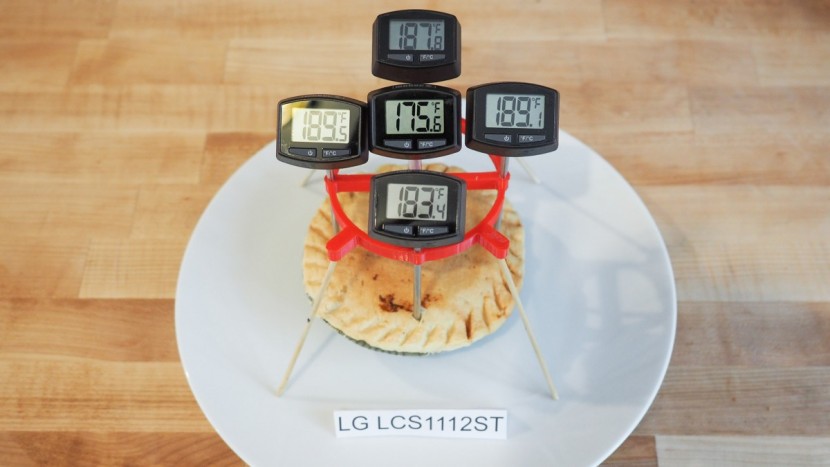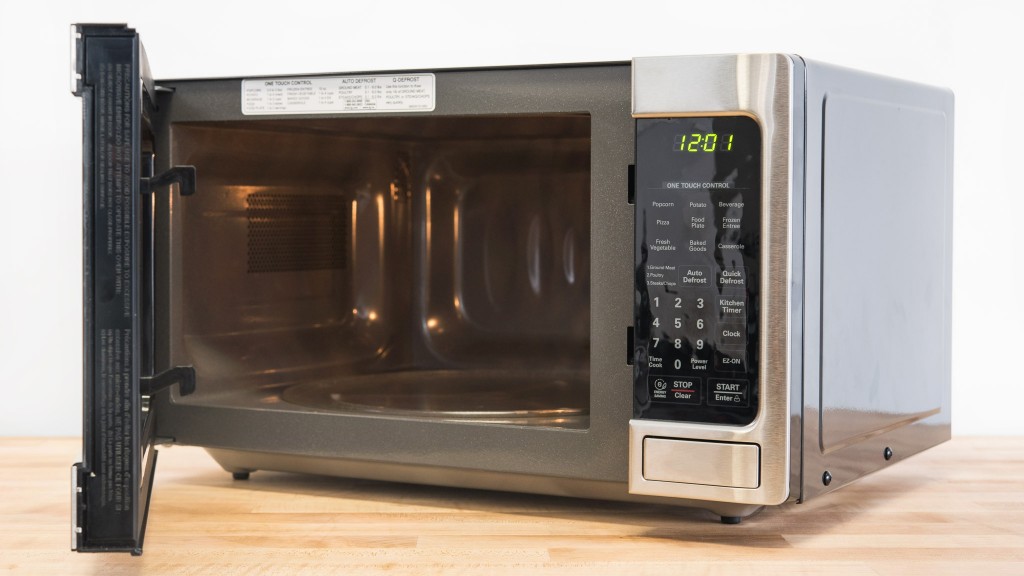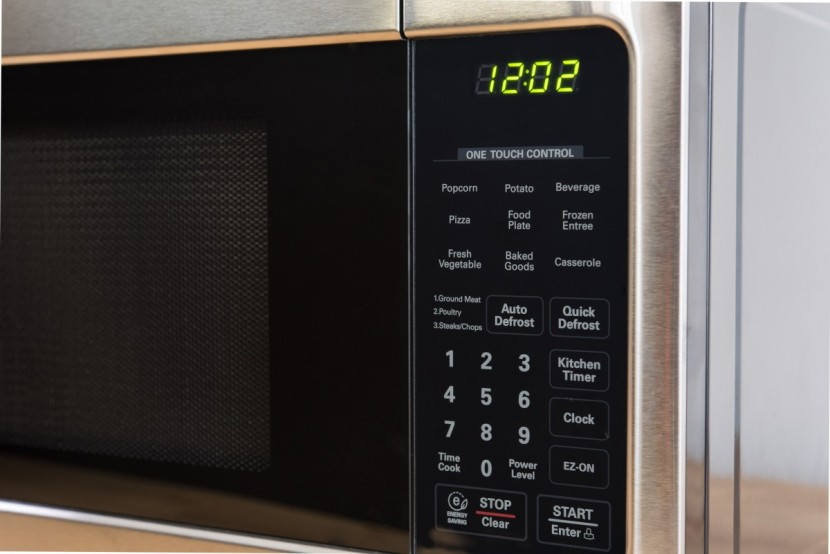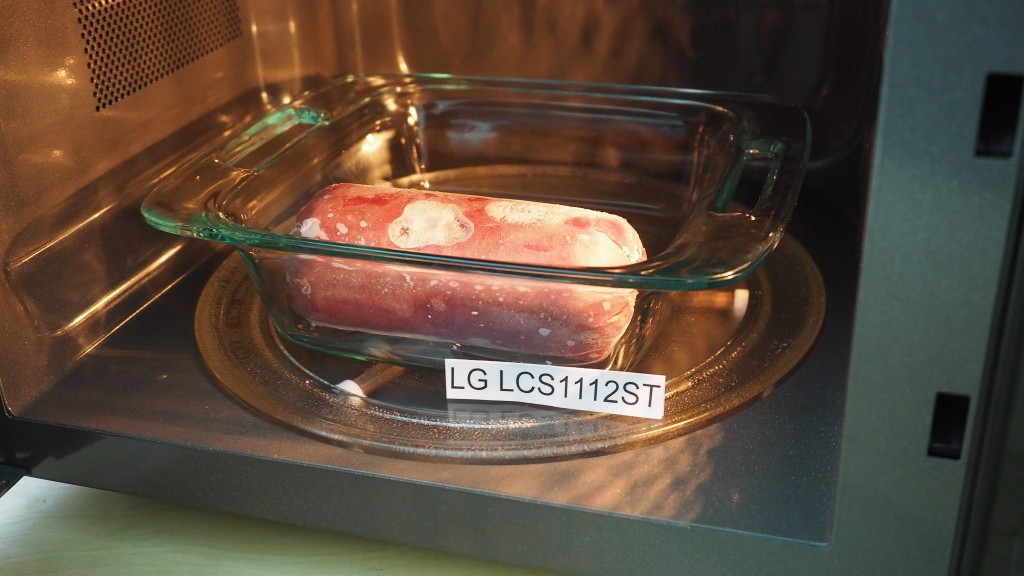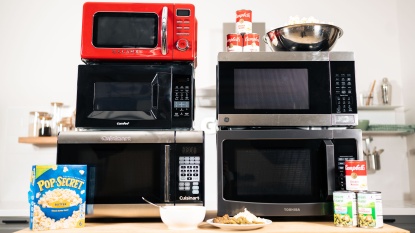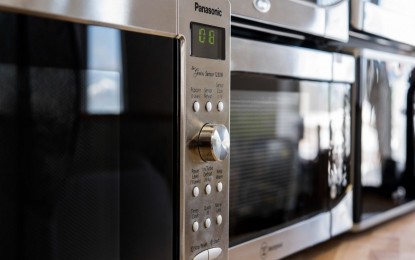LG LCS1112ST Review
Our Verdict
Our Analysis and Test Results
The LG didn't particularly excel in any suite of tests, though it did heat very evenly. This is an average microwave that seems to cost disproportionately high to its performance.
Heating
Microwaves are primarily for heating and reheating food. Consequently, this made up 40% of the total score. The LG did about average, earning a 5 out of 10. This was determined by its performance in a handful of different heating related tests, including making a frozen burrito, a Hot Pocket, heating up a plate of leftovers, a chicken pot pie, an individual serving of lasagna, and using chocolate to make a map of the heating pattern of the microwave.
The LG did well at heating a frozen burrito, though not as well as the Sharp or the Kenmore. All sections of the burrito hit the necessary temperature, and there were only 11.1°F average temperature variation between the sections, much better than the 45.7°F of the Westinghouse
This model did about the same at heating up a small portion of lasagna, with all areas hitting the necessary temperature of 160°F, and an average difference of 6.9°F. This put it at the third-best of the entire group. Performance dropped considerably when we reheated the plate of leftovers. The LG did a terrible job — the worst of the group — using the setting for a plate of food, two servings. The mashed potatoes were on average 40°F cooler than the green beans and chicken tenders.
The LG made up some points in the chicken pot pie test, doing the second-best out of the group. The average temperature difference of 6.8°F was relatively small, and all areas were above the minimum temperature stated by the package directions.
It did slightly above average in our Hot Pocket test, scoring in the middle of the pack. It had about 6.5°F average temperature variation, a little more than the 1.9°F of the best model. All regions of the Hot Pocket did hit the minimum temperature though.
The LG finished out the Heating metric with an excellent performance in the chocolate heat map test.
We heated the cooled disc for one minute and evaluated the results. The chocolate was evenly melted throughout, with no solid or burnt spots.
Ease of Use
Following heating, ease of use was the next most important metric, making up 30% of the total score. This metric compared how convenient each of these products were to use, analyzing the preset effectiveness, the keypad layout and functions, the interior light and if the product would slide around on the counter during use. The LG did alright, earning a 6 out of 10.
This model would slide around a tiny bit when the door was opened and closed on a smooth countertop, moving just shy of a quarter of an inch. You can see inside the LG when it is running and it does have a light that will turn on when the door opens, but we found the light to be a little subpar. This model does have a kitchen timer function on it, but it can't be used when food is being heated. The keypad was pretty standard, with no major complaints on our part.
The only quick button on this model is a “+30 Seconds” button, and it will automatically start the machine after being pressed. Finally, we looked at the effectiveness of the preset buttons, particularly the “Popcorn” and “Potato” buttons. The LG did better popping popcorn than baking the potato. We ranked the popcorn produced as being third in our taste test, with no trace of a burnt taste. It also didn't leave too many kernels unpopped — about 30 by our count.
The potato was about average, mainly due to the fact that there was no notification and pause to flip it. The bottom and left side were a little overcooked, but the average temperature variation was small, about 6°F. The potato quality would be drastically improved by manually stopping and flipping it at the halfway point, but that would somewhat defeat the purpose of an automatic potato preset.
Defrosting
This set of tests evaluated how well the defrost by weight function worked on each appliance. We scored the LG's performance by defrosting a roll of ground turkey and a frozen muffin. We also compared the different defrost functions and features available on each machine, though we placed much less significance on that compared to actual defrosting performance.
The LG did about average at defrosting the roll of ground turkey, estimating that it would take 6:40 to adequately defrost based on the weight. It notifies you to stop and flip the roll at the halfway point as well. After being heated, about 9.1 ounces were completely defrosted, easily scraping off the slightly frozen center. This semi-frozen center took a little bit of effort to break apart, but it was still doable. This model didn't cook any of the pieces, though it was on the verge, with some very warm pieces.
We used the meat Auto-Defrost function for 4 ounces to defrost the muffin, as it most closely matched up. The top of the muffin was a little cooler than the rest, but the chocolate chips were just slightly melted. The inside of the muffin was warm throughout.
This model lacks a timed defrost, but has a Quick Defrost function that is automatically set at two minutes. The weight defrost gives you the choice between ground meat, poultry, or steak/chops.
Speed
Microwaves are known for being speedy, and this last metric puts it to the test. We heated up 250 mL of water in a beaker for 30 seconds in each model and compared the temperature rise to determine scores. The LG did about average, increasing the temperature by 33°F in the test.
Value
The LG is not really a good value, performing in the lower half of the pack and costing in the upper third.
Conclusion
While the LG did well at making a frozen burrito — a task that stumped many other models — it still was surpassed by the Sharp for burrito expertise. This was canceled out by its poor performance at heating up a plate of leftovers and was otherwise an unremarkable microwave. This model does cost less than the top scorer by about a hundred bucks but was over 50% more expensive than our Best Buy award winners, which both scored better.


